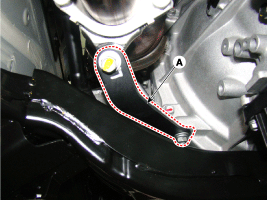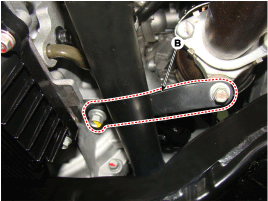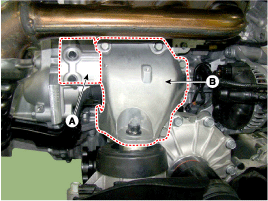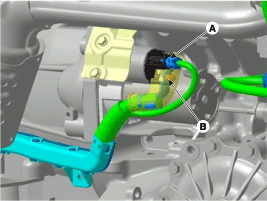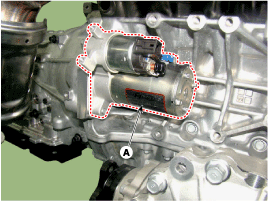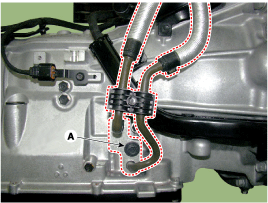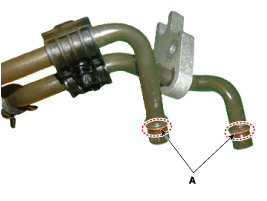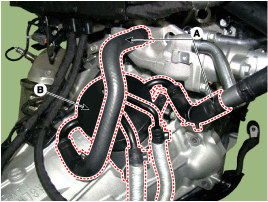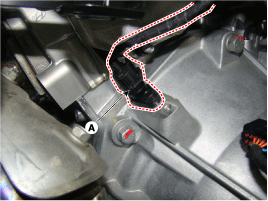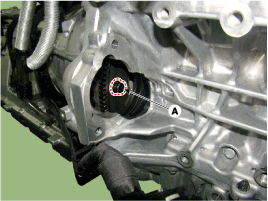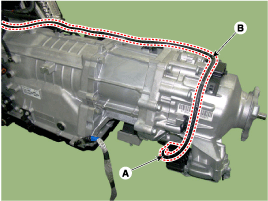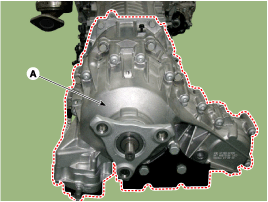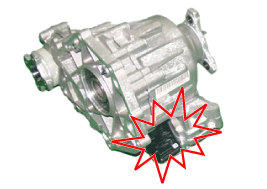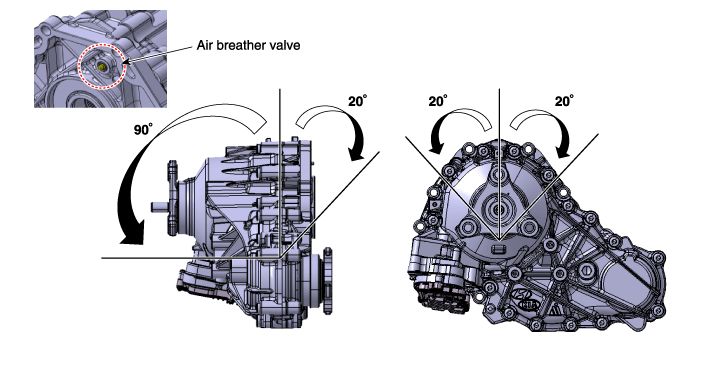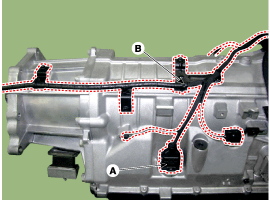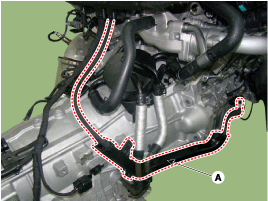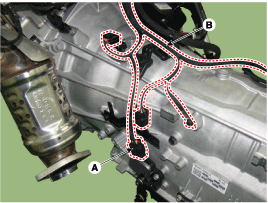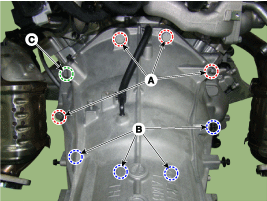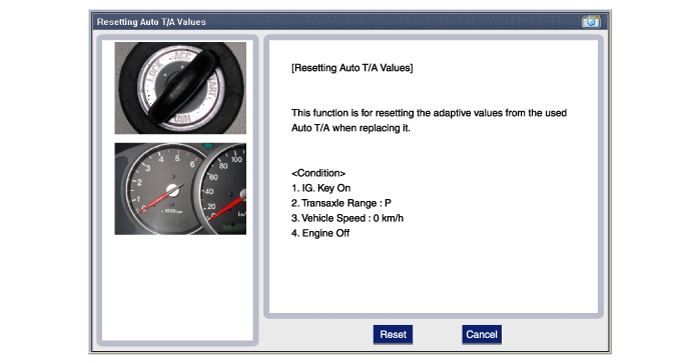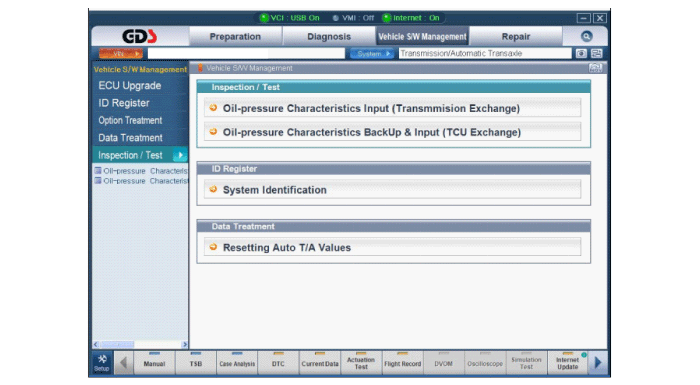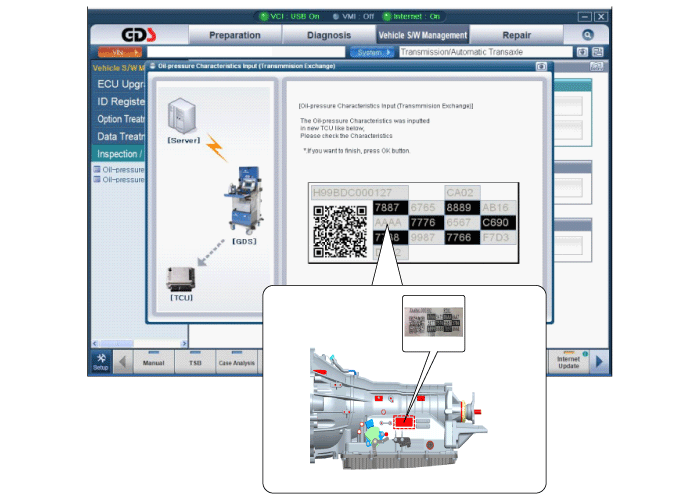Hyundai Genesis: Automatic Transmission System / Automatic Transmission Repair procedures
Hyundai Genesis (DH) 2013-2016 Service Manual / Automatic Transmission System (SBC) / Automatic Transmission System / Automatic Transmission Repair procedures
| Removal |
| 1. |
Turn ignition switch OFF and disconnect the negative (-) battery cable. |
| 2. |
Remove the under cover.
(Refer to Engine Mechanical System - "Engine room under cover") |
| 3. |
Remove the LH side stay (A) and RH side stay (B).
|
| 4. |
Remove the engine and transmission assembly.
(Refer to Engine Mechanical System - "Engine And Transaxle Assembly") |
| 5. |
For AWD, remove the front propeller shaft assembly.
(Refer to Driveshaft and axle - "Front Axle Assembly") |
| 6. |
Using the elephant jack, support the engine. |
| 7. |
Remove the starter cover (A). |
| 8. |
Remove the engine support bracket (B).
|
| 9. |
Disconnect starter connector (A) and cable (B) from the start "B" terminal.
|
| 10. |
Remove the starter (A).
|
| 11. |
Disconnect the oil cooler tube (A).
|
| 12. |
Disconnect the cooler hose (A). |
| 13. |
After removeing the mounting bolts, remove the ATF warmer (B).
|
| 14. |
Remove the CKPS (A).
|
| 15. |
Remove the torque converter mounting bolts (A-6ea) by rotating the crank shaft pulley.
|
| 16. |
Disconnect the AWD ECU connector (A). |
| 17. |
Disconnect the wiring (B) from the transfer case(AWD) and transmission.
|
| 18. |
Remove the transfer case(AWD) (A) from the transmission.
|
| 19. |
Remove the E-module connector (A). |
| 20. |
Disconnect the wiring (B) from the transmission.
|
| 21. |
Disconnect the starter "B"terminal wiring (A) after removing mounting bolts.
|
| 22. |
Disconnect the inhibitor switch connector (A). |
| 23. |
Disconnect the wiring (B) from the transmission.
|
| 24. |
Using the transmission jack, support the transmission. |
| 25. |
After loosening the mounting bolts, remove the transmission from the engine.
|
| Installation |
| 1. |
To install, reverse the removal procedure.
|
| 2. |
In case of the reinstallation.
|
| 3. |
In case of the replacing with a new automatic transaxle.
|
| 4. |
In case of the replacing with a remanufactured automatic transaxle.
|
 Automatic Transmission Components and Components Location
Automatic Transmission Components and Components Location
Components Location
2WD
1. Engine2. Transmission3. ATF warmer4. Transmission connector(E-Module connector)5. Inhibitor switch6. Shift cable
AWD
1. Engine2. Transmission3. Transfer case ada ...
Other information:
Hyundai Genesis (DH) 2013-2016 Owners Manual: Emergency trunk safety release
Your vehicle is equipped with an Emergency Trunk Safety Release lever located inside the trunk. When someone is inadvertently locked in the trunk, the trunk can be opened by moving the lever in the direction of the arrow and pushing the trunk open. WARNING You and your passengers ...
Hyundai Genesis (DH) 2013-2016 Service Manual: Front Door Inside Handle Repair procedures
Replacement 1. Remove the front door trim. (Refer to Front Door - "Front Door Trim") 2. Disconnect the front door inside handle lamp connector (A). 3. After loosening the mounting screws, remove the front door inside handle (B). 4. Install in the reverse order of removal. &nb ...
© 2013-2025 www.hgenesisdh.com

